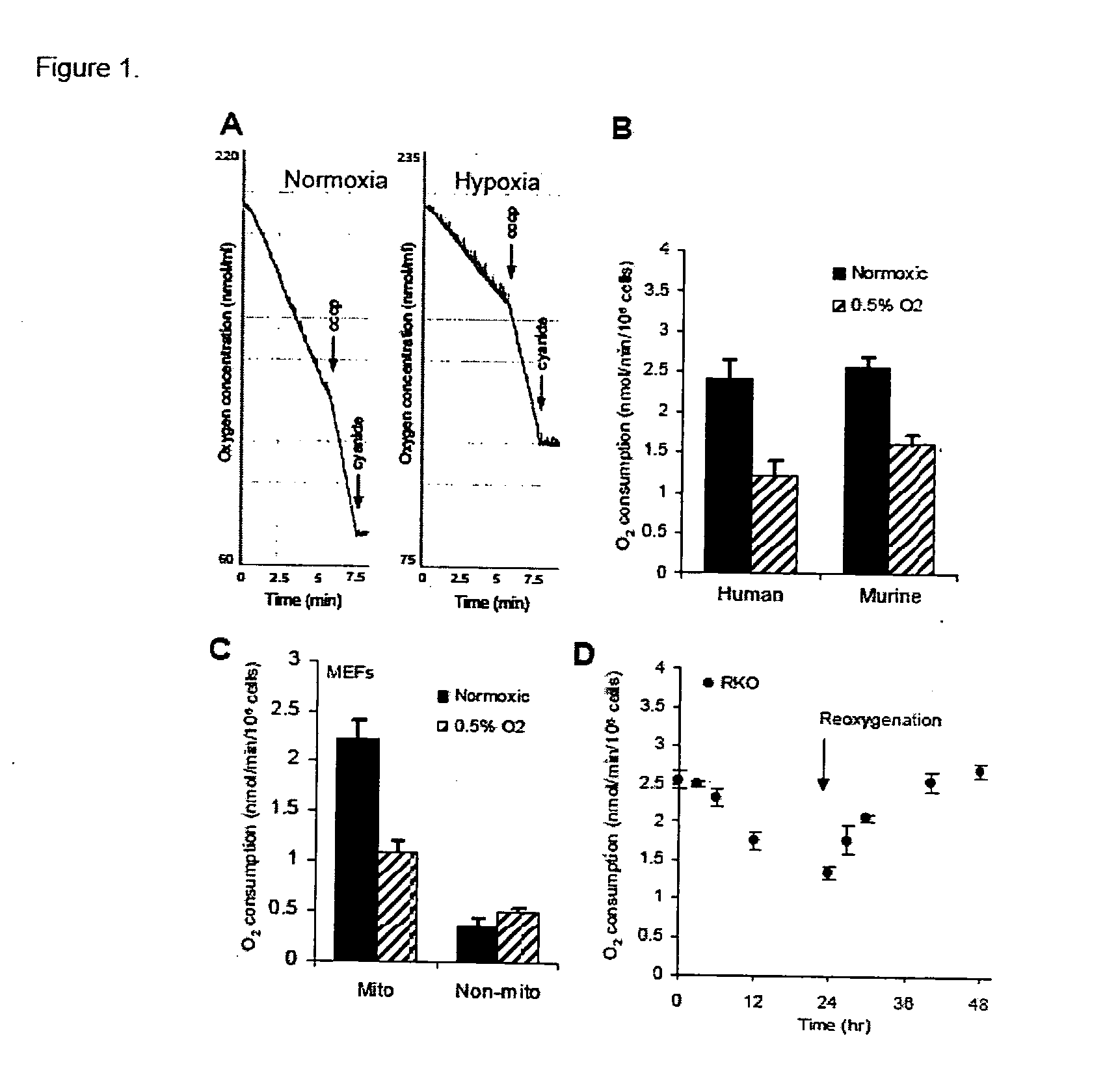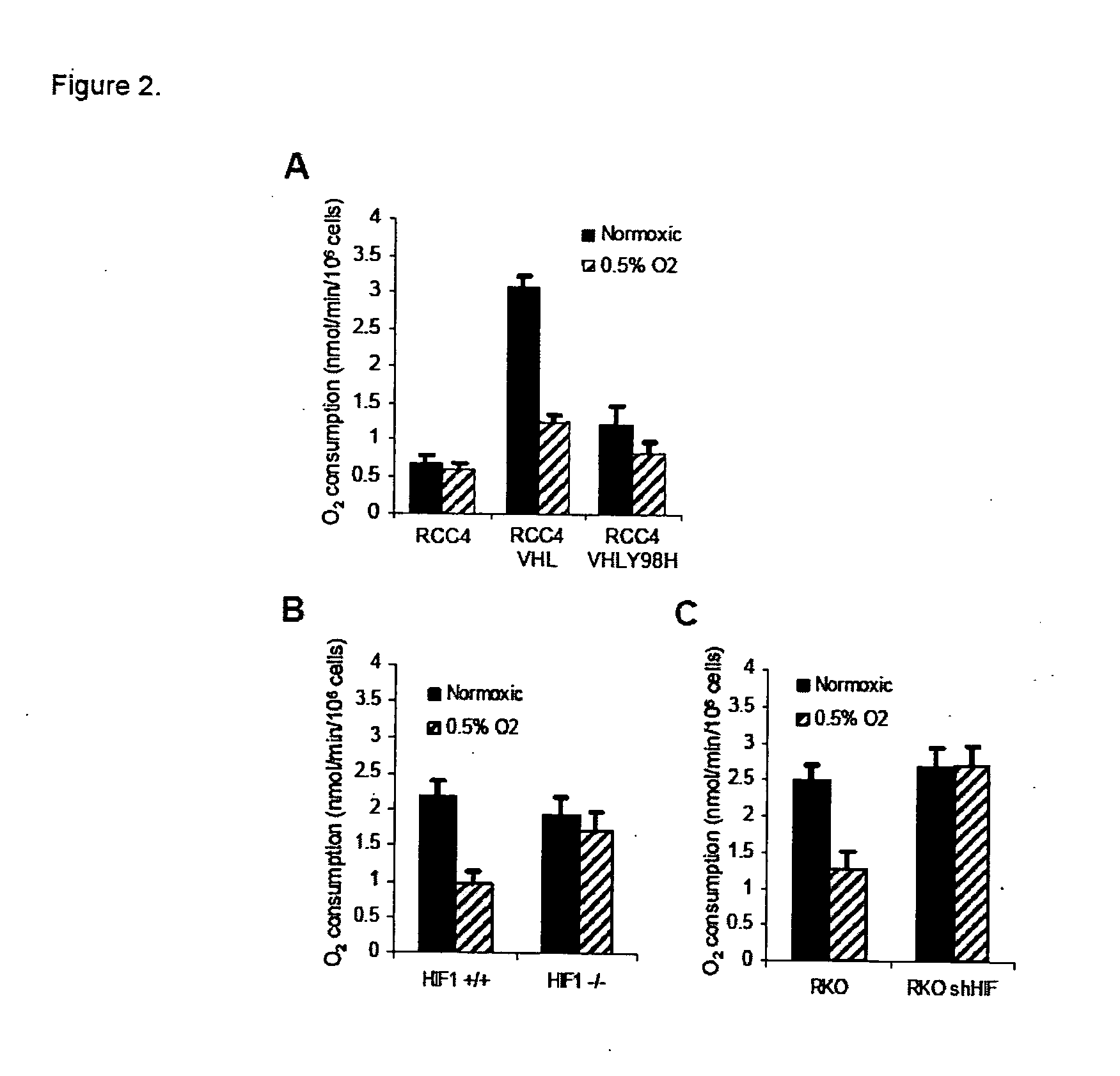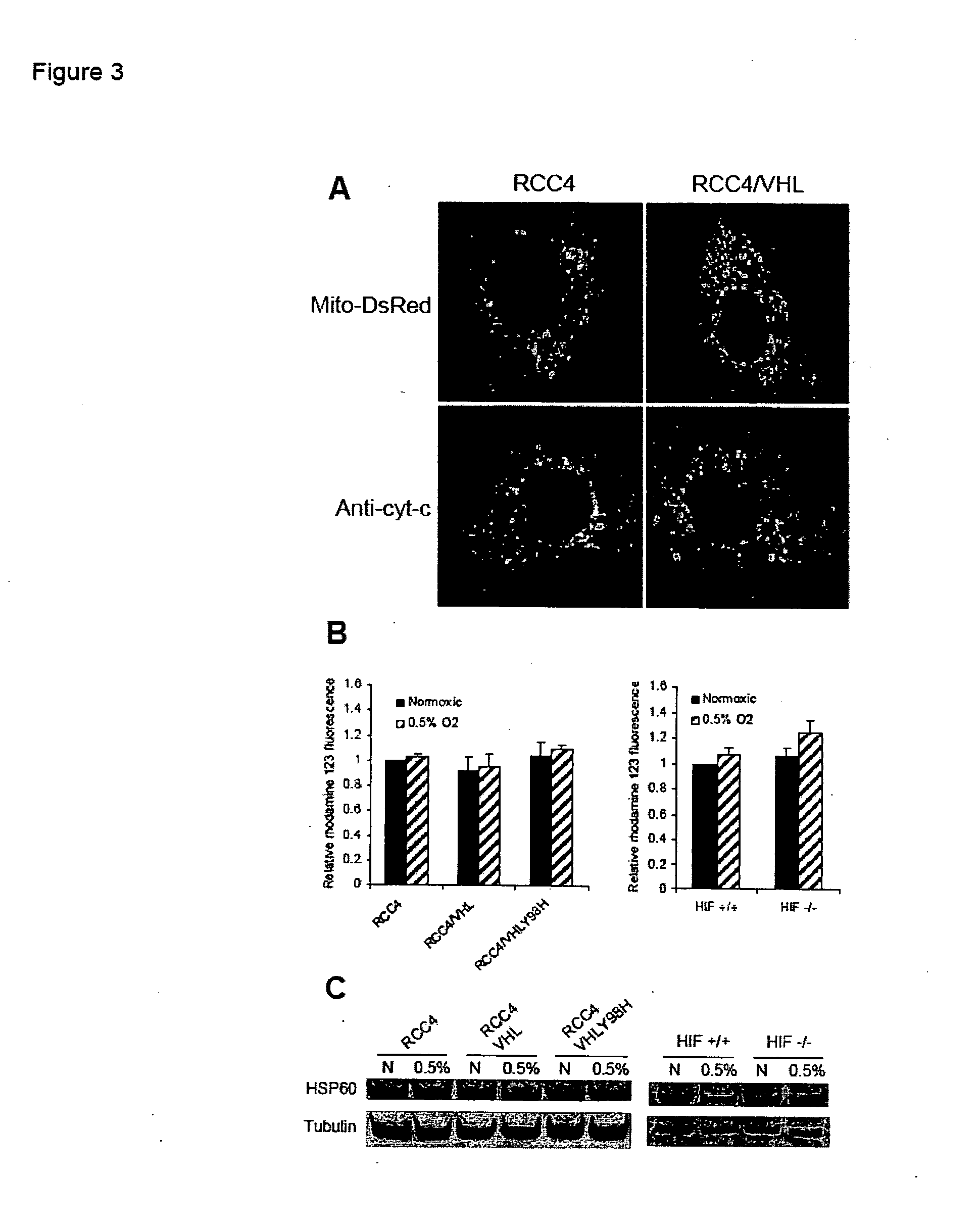Modulation of mitochondrial oxygen consumption for therapeutic purposes
a technology of mitochondrial oxygen consumption and mitochondrial oxygen, which is applied in the direction of antibody medical ingredients, biocide, heterocyclic compound active ingredients, etc., can solve the problems of complex metabolic adaptation, tissue hypoxia, and insufficient supply of oxygen from the bloodstream to the cells in the tissue, and achieve the effect of lowering adverse side effects
- Summary
- Abstract
- Description
- Claims
- Application Information
AI Technical Summary
Benefits of technology
Problems solved by technology
Method used
Image
Examples
example 1
Materials and Methods
[0059] Cell lines and cell culture. Primary human fibroblasts have been described previously (Denko et al., 2003; Kim et al., 1997) and RKO human colon carcinoma cells were obtained from the American Type Culture Collection (ATCC, Manassas, Va.). RCC4, RCC4 / VHL, and RCC4 / Y98H human renal cell carcinoma cell lines have also been described previously (Chan et al., 2005). Wildtype and HIF-1α knockout mouse embryo fibroblasts (MEFs) were a gift from Dr. R Johnson (University of California, San Diego). All cells were grown in vitro as monolayers in Dulbeco's Modified Eagle's Media (DMEM) supplemented with 10% fetal bovine serum (FBS). For treatment with moderate hypoxia, cell culture dishes were placed into an Invivo2 humidified hypoxia workstation (Ruskinn Technologies, Bridgend, UK) at the indicated oxygen concentrations. Severe hypoxia was generated in an anaerobic workstation with a palladium catalyst (Sheldon Co., Cornelius, Oreg.). Tirapazamine toxicity was m...
example 2
Metabolic Targeting of Hypoxia and HIF1 in Solid Tumors can Enhance Cytotoxic Chemotherapy
[0088] Under hypoxic conditions, HIF1 causes an increase in its target gene PDK1, which acts to limit the amount of pyruvate entering the citric acid cycle, leading to decreased mitochondrial oxygen consumption. This adaptive response to low oxygen conditions may allow cells to spare molecular oxygen when it becomes scarce, making it available for other critical cellular processes. These findings predict that inhibition of HIF1 or PDK1 in vivo could alter tumor metabolism by increasing oxygen consumption which would lead to decreased overall tumor oxygenation. Decreased oxygenation in turn would increase the effectiveness of hypoxia targeted therapies such as the hypoxic cytotoxin tirapazamine. We tested this hypothesis using echinomycin, a recently identified small molecule inhibitor of HIF1 DNA binding activity, and dichloroacetate (DCA), a small molecule inhibitor of PDK1 activity.
Result...
PUM
| Property | Measurement | Unit |
|---|---|---|
| volume | aaaaa | aaaaa |
| volume | aaaaa | aaaaa |
| temperature | aaaaa | aaaaa |
Abstract
Description
Claims
Application Information
 Login to View More
Login to View More - R&D
- Intellectual Property
- Life Sciences
- Materials
- Tech Scout
- Unparalleled Data Quality
- Higher Quality Content
- 60% Fewer Hallucinations
Browse by: Latest US Patents, China's latest patents, Technical Efficacy Thesaurus, Application Domain, Technology Topic, Popular Technical Reports.
© 2025 PatSnap. All rights reserved.Legal|Privacy policy|Modern Slavery Act Transparency Statement|Sitemap|About US| Contact US: help@patsnap.com



